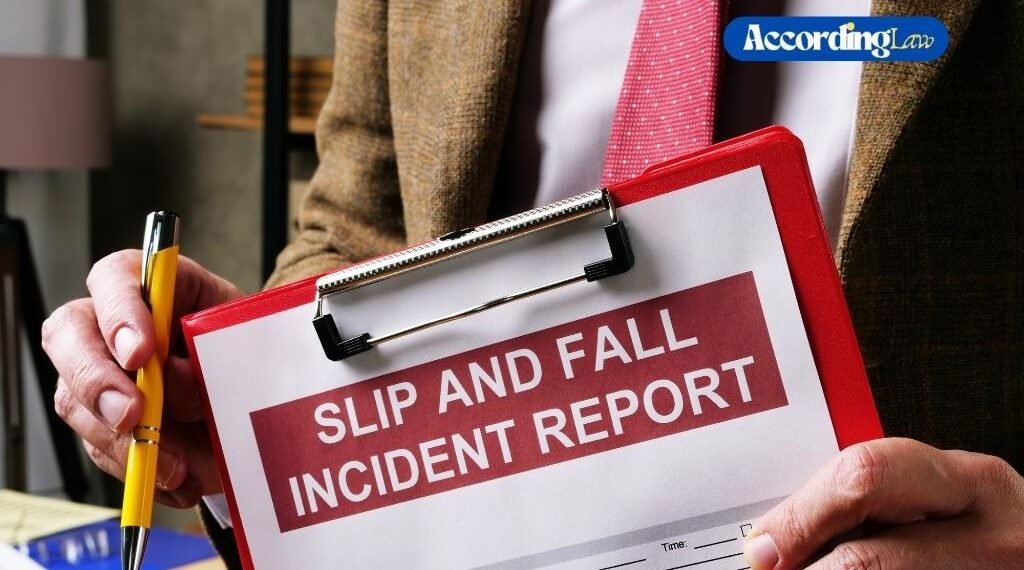Accidents happen when we least expect them. One moment you’re walking through a shopping centre, and the next, you’re on the ground in pain after slipping on a wet floor. But when does such an incident transform from an unfortunate accident into a valid legal claim? If you’ve been injured in such an incident, slip and fall accident lawyers in Melbourne can help determine if you have a case worth pursuing.
This guide explains the legal framework that determines when a slip and fall can form a valid claim in Australia. Whether you’re an injured person, a family member supporting someone who’s been hurt, or an adviser, understanding these principles is essential.
Key Takeaways
Table of Contents
What Is a Slip and Fall Claim?
A slip and fall claim refers to a legal action where an injured person seeks compensation after falling due to dangerous or defective conditions on someone else’s property. These incidents include slipping on wet surfaces, tripping over obstacles, falling down poorly maintained stairs, or stumbling due to inadequate lighting.
In Australia, these claims are governed by negligence principles, specifically within the domain of occupier’s liability. The law recognises that those who control premises have responsibilities to people who enter those spaces.
Common scenarios where these claims arise include:
Core Legal Elements of a Valid Claim
For a slip and fall claim to be legally valid in Australia, four essential elements must be present:
Duty of Care
Various parties can owe a duty of care, including property owners, businesses, landlords, and local councils. The extent of this duty varies depending on the premises type and the injured person’s status (invitee, licensee, or trespasser). For example, a shopping centre owes a higher duty to customers than a private homeowner does to unexpected visitors.
Breach of Duty
A breach occurs when the responsible party fails to take reasonable steps to address foreseeable risks. Examples include:
“Property owners and occupiers must take reasonable steps to identify potential hazards and address them promptly. What constitutes ‘reasonable’ depends on the specific circumstances of each case.” – National Compensation Lawyers
Common breaches include:
Causation
You must establish that the breach directly caused your injury. This requires showing that the unsafe condition was the primary reason for your fall and subsequent harm. Medical evidence plays a critical role in linking the incident to specific injuries.
Injury and Compensable Loss
Finally, you must have suffered actual harm that can be compensated. This includes physical injuries, financial losses from medical expenses or missed work, and impacts on your quality of life.
Evidence That Strengthens a Claim
The strength of a slip and fall claim often depends on the quality of evidence you can gather. Strong documentation makes the difference between a successful claim and one that’s dismissed.
Immediate Evidence to Gather
If possible, collect the following at the scene:
- Photos of the hazard (wet floor, broken step, etc.)
- Images of the surrounding area showing lack of warnings
- Pictures of your footwear
- Weather conditions (if relevant)
- Your clothing if it shows marks from the fall
Witness Statements and Official Records
Gather contact details from anyone who saw the incident. Their testimony can substantiate your version of events. Additionally, ensure the incident is officially reported and request a copy of:
- Incident reports filed with the premises
- Maintenance and cleaning records
- Any CCTV footage that may have captured the incident
Medical Documentation
Comprehensive medical records establish the link between the incident and your injuries:
- Emergency department records
- Doctor’s notes and diagnoses
- Test results and imaging (X-rays, MRIs)
- Treatment plans and prescriptions
- Specialist consultations
Common Hazards and Liability Issues
Certain hazards frequently appear in slip and fall claims. Understanding these can help assess the validity of your potential case:
Slippery Surfaces
Wet floors without warning signs, recently waxed surfaces, or spills left unattended are common causes of falls. Liability often hinges on how long the hazard existed and whether staff should have reasonably known about it.
Structural Issues
Uneven flooring, damaged footpaths, potholes, and defective stairs or handrails create dangerous conditions. In these cases, maintenance records and previous complaints may establish knowledge of the problem.
Environmental Factors
Poor lighting, sudden changes in floor elevation, or temporary hazards during construction or events can all create liability if proper precautions weren’t taken.
Who Can Be Held Liable?
Liability for slip and fall accidents can extend beyond just the property owner:
Multiple Potential Parties
Depending on the circumstances, responsible parties might include:
- Property owners and occupiers
- Business operators
- Landlords and property managers
- Local councils (for public spaces)
- Maintenance contractors
- Cleaning companies
Sometimes multiple parties share responsibility. For example, in a shopping centre, both the centre management and the individual store might be liable for different aspects of safety.
Compensation and Types of Damages
If your claim is successful, you may be entitled to various forms of compensation:
Economic Losses
These tangible costs include:
- Past and future medical expenses
- Rehabilitation costs
- Lost income and earning capacity
- Out-of-pocket expenses
Non-Economic Losses
These intangible damages compensate for:
- Pain and suffering
- Loss of enjoyment of life
- Psychological impacts
Time Limits and Procedural Requirements
Acting promptly is critical in slip and fall cases. In most Australian jurisdictions, you generally have three years from the date of injury to commence legal proceedings, though this varies by state and territory.
Extensions may apply in limited circumstances, such as:
- When injuries aren’t immediately apparent
- For minors or people with disabilities
- Where new evidence later emerges
Practical Steps After a Slip and Fall
If you’ve experienced a slip and fall accident:
Immediate Actions
Take these steps right away:
- Seek medical attention, even for seemingly minor injuries
- Report the incident to the property owner/manager
- Document the scene and your injuries with photos
- Collect witness information
Follow-Up Steps
As you recover:
- Keep all medical records and receipts
- Maintain a journal of symptoms and recovery
- Track all expenses related to the injury
- Don’t discuss your case on social media
Conclusion
Slip and fall accidents can lead to valid legal claims when the four essential elements are present: a duty of care, breach of that duty, causation, and actual damages. The strength of your claim depends largely on the evidence you gather, the nature of the hazard, and how quickly you act.
If you’ve been injured in a slip and fall incident, consider consulting with experienced legal professionals. National Compensation Lawyers can evaluate your case, guide you through the complex legal process, and help you secure the compensation you deserve for your injuries and losses.
Remember that time limits apply to personal injury claims in Australia, so seeking legal advice promptly gives you the best chance of protecting your rights and obtaining fair compensation.


